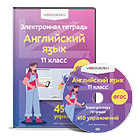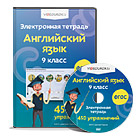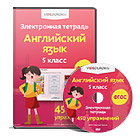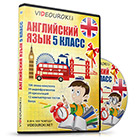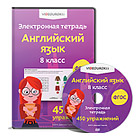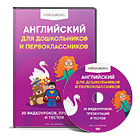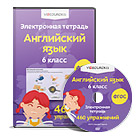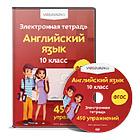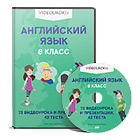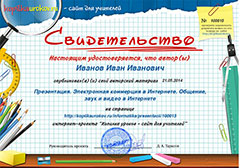| 2 min
5 min
5 min
10 min
5 min
8 min min
5 min
2 min
3 min
| I. Organization moment
II. Checking up the home task
III. Vocabulary work
IV. Explaining new material
V. Warm up
VI. Reading
VII. Speaking
VIII. Marking
IX. Home task X. The end of the lesson
| Good morning, boys and girls! Nice to meet you! How are you? Tell me please, what date is it today? Who is on duty today? Are you ready to work?
Let’s check up your homework (teacher checks the homework by asking in oral form)

Music and musical instruments / Present perfect continuous, Present perfect simple Musical Instruments of Kazakhstan

Dombra Dombra – Kazakh two-stringed plucked musical instrument. It is used as accompanying, solo and main instrument in the Kazakh traditional music.Do... Read more 
Kazakh shan-kobyz Shan-kobyz is the ancient Kazakh reed musical instrument. The instrument is made of the wooden plate, in the middle of which there is a reed. The thre... Read more 
Kobyz Kobyz might be considered one of the widely-spread musical instruments of the Kazakh people. Kobyz is the bow instrument.Kobyz is made of the whole wo...
EX 3b p 61WB
Read the text
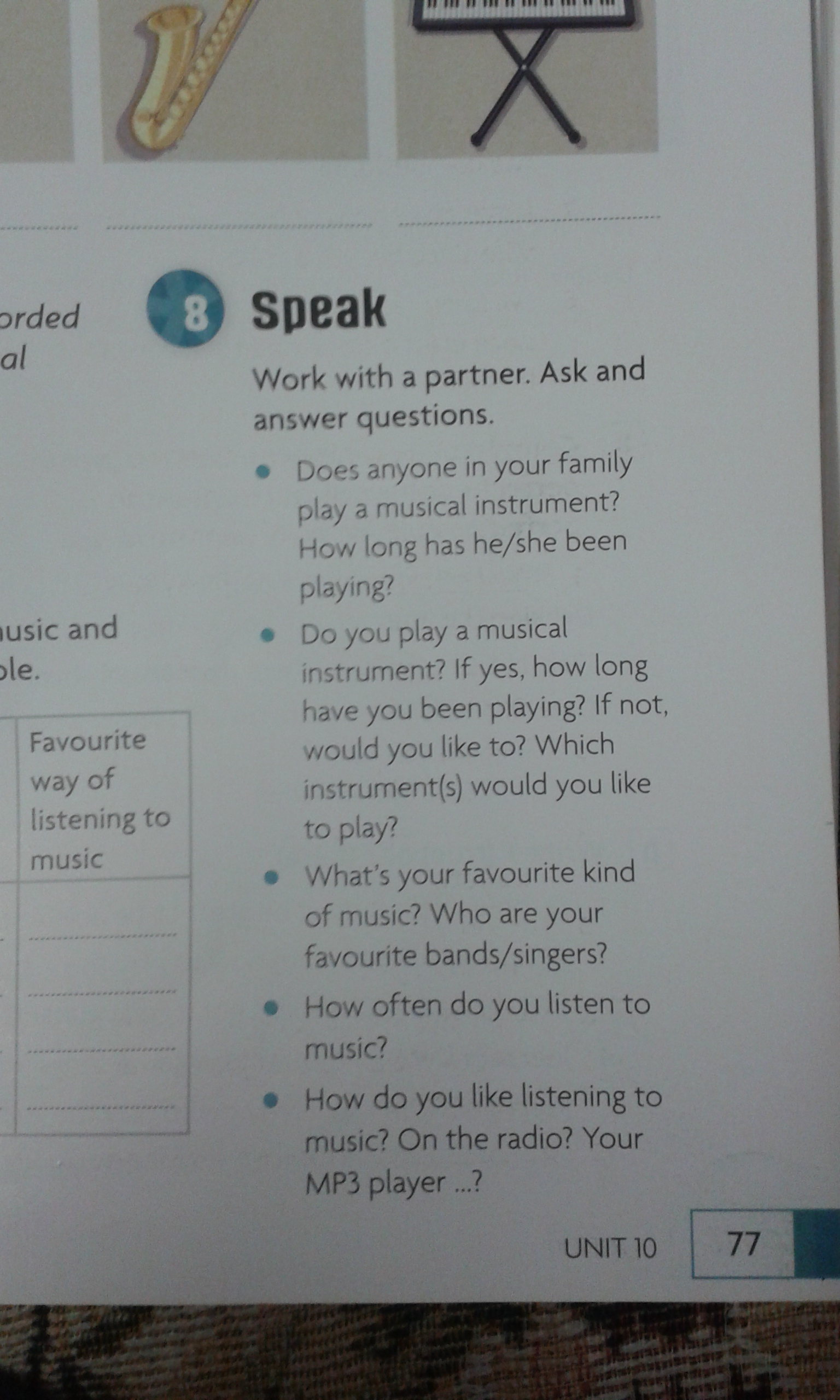
EX 3c p 61 WB
EX 3c p 61 WB The lesson is over. Good bye!!!!! - See you on next lesson.
| Good morning, teacher! We are fine, thank you! Today is the 20th of February I am on duty today Yes, we are
Today our home task was EX 2c 3a p 61 WB

Musical Instruments The great majority of musical instruments fall readily into one of six major categories: bowed strings, woodwind, brass, percussion, keyboard, and the guitar family, the first four of which form the basis of the modern symphony orchestra.
The four principle orchestral string instruments are (in descending order of overall pitch) the violins (usually divided into two sections, playing individual parts), the violas, the cellos and the double basses. 
Flute
a normally silver-plated (or in more extravagant cases, gold), narrow-bored instrument, held horizontally just under the mouth, and activated by blowing air across an aperture at one end of the instrument.
Oboe
a narrow-bored wooden instrument descended from the medieval shawm, held vertically, and activated by means of placing the end-positioned double-reed in the mouth, and blowing under high-pressure so as to force air between the two bound reeds, causing them to vibrate. Other members of the oboe family include the lower pitched cor anglais (or English Horn), and (far more rarely) baritone oboe and heckelphone (bass oboe)..
Clarinet
like the oboe usually wooden, played vertically and held in the mouth, but with a wider bore and consisting of a single reed which when activated vibrates against a detachable mouthpiece. 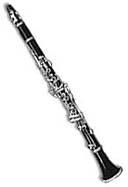
Bassoon
as the name would suggest, the bass member of the woodwind family, and by far the largest, especially its lower-pitched relation, the extremely bulky double or contra-bassoon. 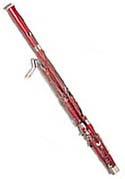 Brass instruments are also activated by blowing into them, although instead of using a form of reed over which the mouth is placed, the lips are placed against or inside the cup of a metal mouthpiece, and made to vibrate against its inner rim. In order of descending pitch, these are:
Trumpet
one of the most ancient of all instruments. 
French horn
another ancient instrument, descended from the use of animals' horns (hence the name) in pre-historic times. 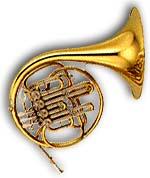
Trombone
descended from the medieval sackbutt, it is the only popular orchestral wind instrument which operates without the use of a valve or key system.
Tuba
not unlike the French horn in basic construction, only more oval in shape and much bigger. 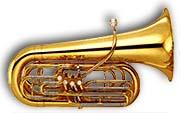 
Tuned
timpani or kettle drum, xylophone, glockenspiel, tubular 
Indefinite pitch
triangle, gong, castanets, whip, rattle, anvil, tambourine, cymbals (struck and clashing), and a variety of drums (side, tenor, bass, tabor, bongo etc.). Plucked
mostly instruments emanating from the 17th/18th centuries where a series of stretched and tuned strings are plucked by a quill or plectrum (e.g. harpsichord, virginal, spinet).
Struck
where the strings are actually hit, either by a tangent (e.g. 17th/18th century clavichord), or hammers (e.g. piano, celesta).
They’ll bring their diaries to write the hometask
Good bye!!!!!!! | The 20th of February
Music and musical instruments / Present perfect continuous, Present perfect simple
|



















